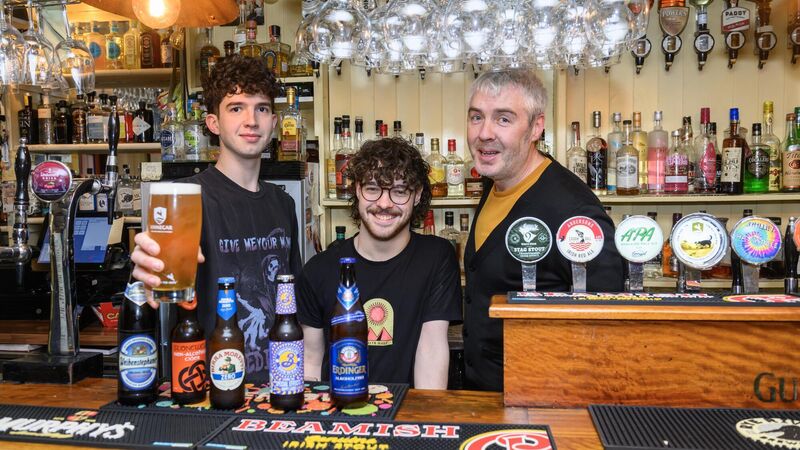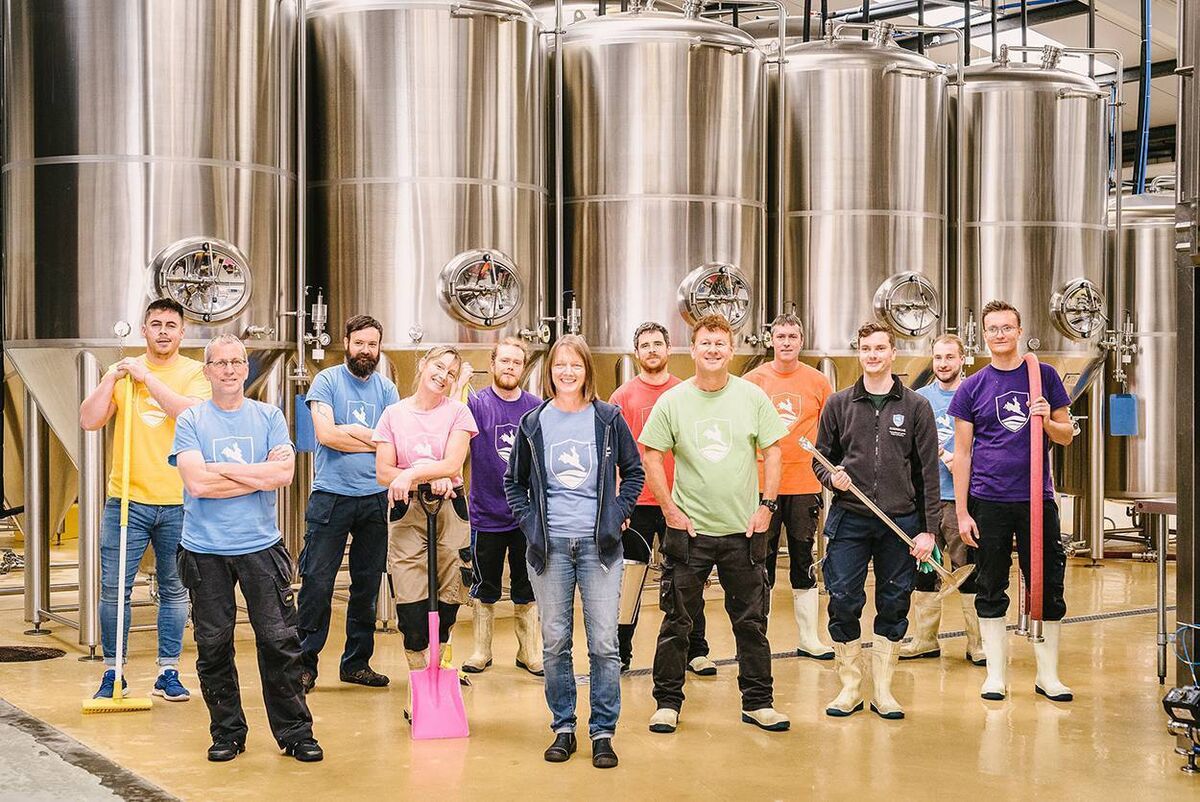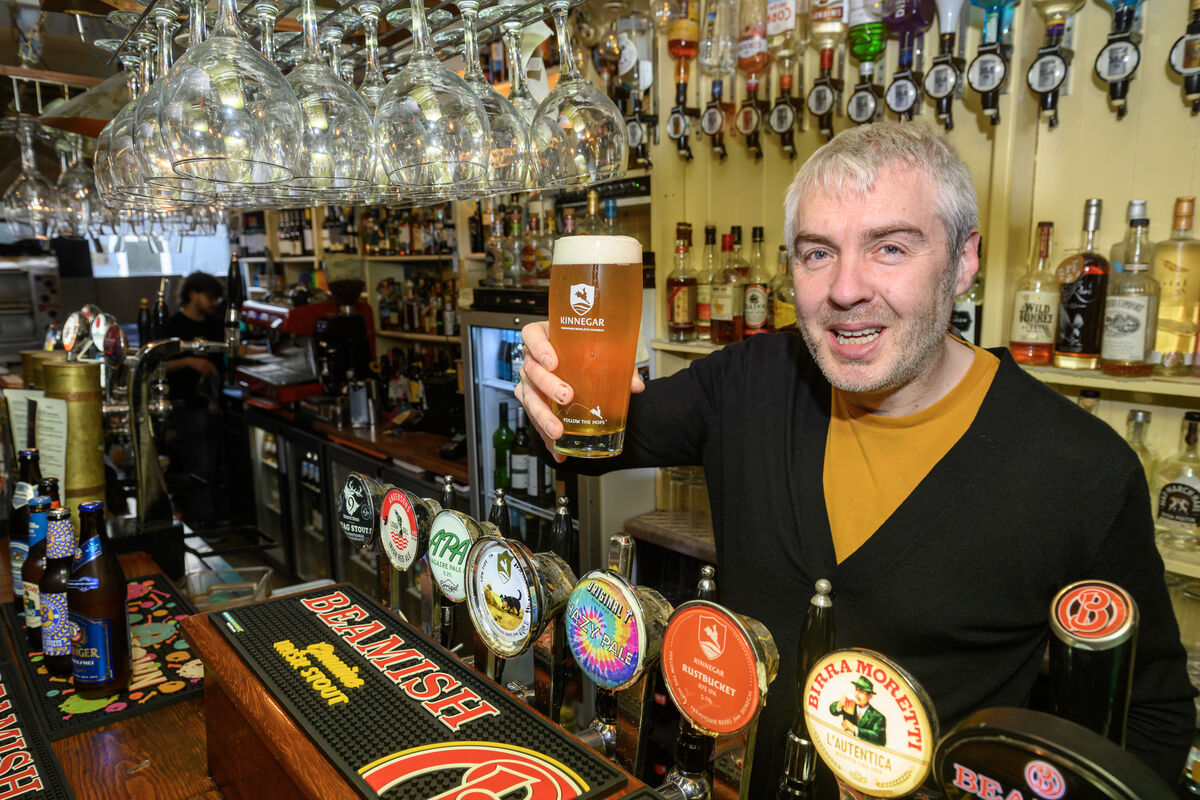Changes in drinking habits: 'It’s really important to have a low-alcohol option — people want an alternative'

Alan O'Rahilly with staff members Samual and Jake serving up a selection of low alcohol beers at Fionnbarra on Douglas Street, Cork. Picture Dan Linehan
Ireland was long synonymous with drinking, and with brewing, and distilling, but there has been a notable shift in drinking culture.
Non-alcoholic and low-alcohol beers, once dismissed as flavoured water, have steadily gained ground in a market long-dominated by pints of stout and lager.
Driven by younger generations, better knowledge around health, and brewing innovations, a new chapter in Ireland’s love affair with beer is being written, in which taste, tradition, and moderation live side by side in increasingly clear-headed harmony.
“People are moderating massively,” says Paul Turner, beer-and-spirits buyer with O’Brien’s Wines.
“Alcohol consumption in Ireland is going down. There has always been this thing at the beginning of the year, where people give up the booze for the month, but we are seeing it happening right across the year now.”
“If you look at May, for example, when communions and confirmations are on, low- and no-alcohol sales are almost up there on a par with January. It has become part of occasions now. ‘No’ and ‘low’ are becoming just as big a part of the thought process for the customer, who is recognising that it is part of a big day and part of the drinking habits of the people they know and the country. Everyone has the no-or-low option for their guests.”
Paul puts much of this change down to younger people’s aversion to getting wasted on alcohol, particularly when compared to previous generations, and an increased awareness around health across all generations. There is another factor, one that is being driven by both the consumer and the industry.
“The quality of produce is far higher than a few years ago,” he says. “If you look at the Heinekens and the Guinnesses of this world, they are putting a lot in to their low-and no-alcohol offerings, because they can see what’s happening in terms of demand. They have put time and money in to creating products that taste so much better than they used to.
“And, then, you have the craft beers. You have the likes of Kinnegar or Wicklow Wolf, in Ireland, who are producing great beer with low or no alcohol. The range of beers available has dramatically increased and they are doing a fantastic job. The variety of products is there now. If you go back just a few years, you’d struggle to find a decent one.”
“We always think of ourselves and ask ourselves, as beer lovers ,what we want and need,” says Libby Carton, owner and director of Kinnegar Brewing, a Donegal-based brewery whose low-alcohol pale ale, Low Tide, has become something of a staple in this writer’s household.
“We think it’s really important to have a low-alcohol option. People want an alternative. In an ideal world, you’d have a beer like our Low Tide and with zero alcohol, but we can’t do it. It’s too difficult and expensive at our scale. So we found that the 1% ABV is a great solution.
“ Getting the hop profile right is important. The hops give it that nice, citrus flavour and getting the balance between the malt and the hops in something that has such low alcohol is difficult, but that is the key to it. It’s difficult to make consistently, but I think we have nailed it now.”

Libby started Kinnegar Brewing with her American husband, Rick LeVert, whom she met while on a J1 student visa in New York. After the Big Apple and a stint in Berlin, the couple came back to Ireland, where they ran a graphic-design business.
“We realised we had come to the end of that and we started looking for something else,” says Libby. “Curiosity got the better of us. Rick was doing a bit of freelance journalism and, in about 2008, he wrote a piece for a magazine about beer culture in Germany and that sparked his interest.”
Four years later, the couple craft and create dozens of excellent beers, renowned not just for their flavours, but also for the wonderfully outrageous designs on their cans and labels; a nod to their graphic-design past.
In 12 years, Libby says she has noticed a definite shift in attitudes to alcohol consumption.
“Five years ago, more people were excited by big, strong, bombastic beers,” she says, “but that’s gone out of fashion and it’s only for a handful of real beer enthusiasts.
“The general public just don’t want that much alcohol anymore.” Data backs that up.
According to the Irish Beer Market Report 2023, beer continues to be Ireland’s favourite alcohol drink, with a market share of 42.9% in 2023. In the same year, sales of non-alcoholic beer grew by 18% and production surged by 50% in response to rising consumer demand.
Non-alcohol beer share is now over 2% of the market, an almost 100% increase in market share over the last four years.
“This is on the back of strong, consumer-driven demand, linked to the ongoing trend of moderation and consumers seeking balance in their drinking,” says the report.

Alan O’Rahilly has run Fionnbarra’s in Cork for more than 20 years. The pub has 30 taps, including Kinnegar on draught. Alan sees the trend towards low and no alcohol as part of a broader demand for variety.
“When I was in my 20s, if you had a Cidona in front of you, people would ask, ‘What’s wrong with you?’, but that seems to be disappearing now,” he says.
“Nobody second guesses why you might be having a cup of tea or a low-alcohol beer. I see it in both the old and young, but definitely with younger people we are seeing a change. They like to alternate. They might keep it low at the start of the night and then have a stronger beer before they go home. They don’t want to feel out of control.”
Alan believes that no- and low-alcohol drinks (including gin and other offerings) account for as much as 12% of the bar’s turnover, a percentage he feels is sure to increase, particularly with a new wave of low-alcohol offerings.
“The low alcohol is newer and people are going for it,” he says. “You’ll get some feel off it, but you can have four or five and not feel drunk. The culture there today is one of people socialising. They like to talk to each other.
“I don’t think we have enough faith in the youth. They are copping on to all this manipulation on social media and they don’t have their heads as stuck in it as much as we think.
“They just want to get out and chat to their friends. We’re a beer-garden pub. We don’t have any live music. People who come to our pub are out to chat and when you give people a variety of brands and strengths of alcohol, it makes a huge difference. Having this variety in strength is good for the pub industry. We do well here.” Perhaps Ireland is getting to the point where a good night can be a great night without having to be a rotten morning.





